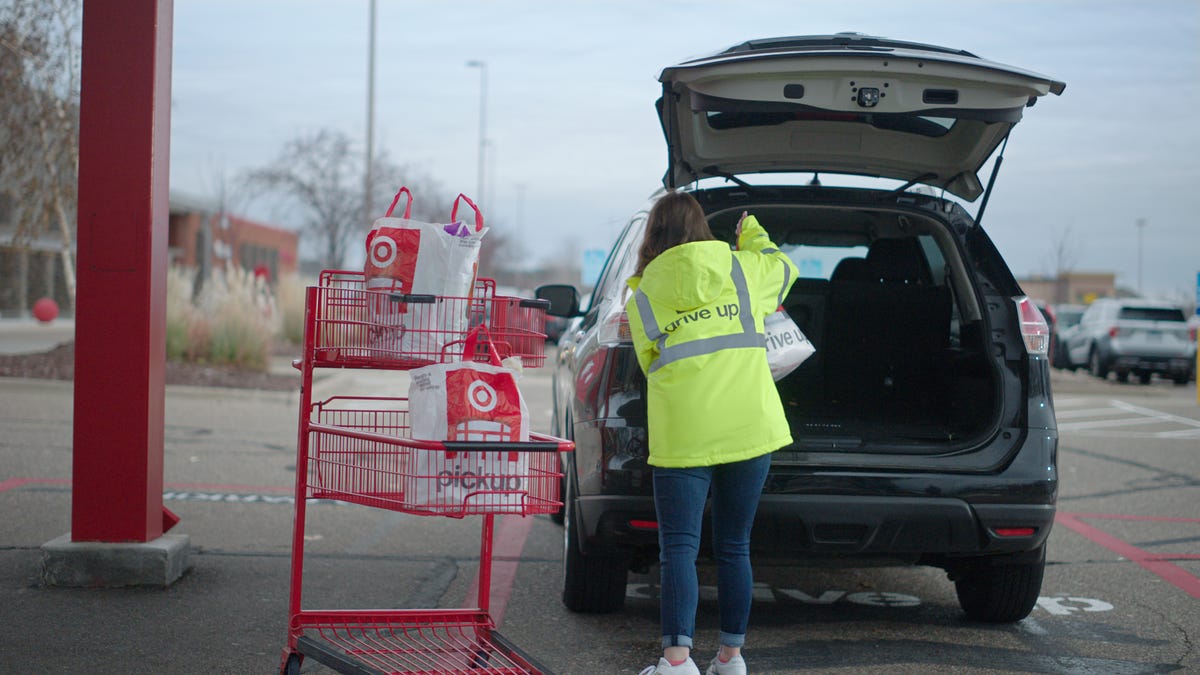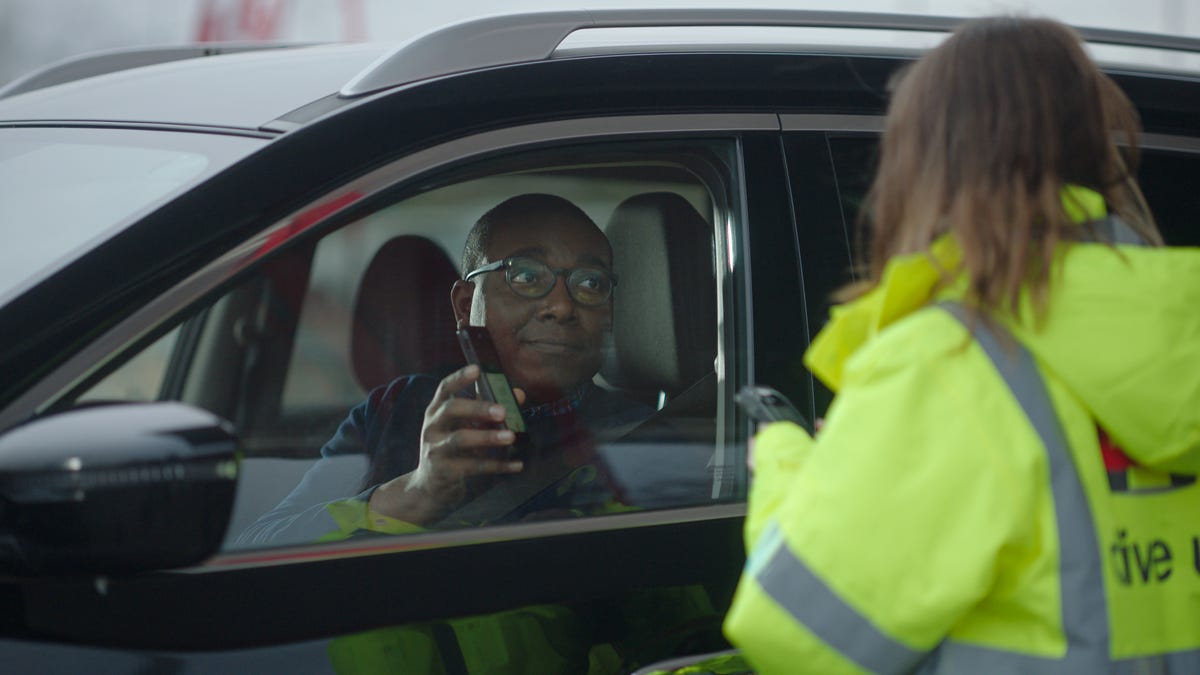When the pandemic took hold in the US, every retailer had to move quickly to adjust to a completely new reality — one that came with an intense new focus on digital operations. Target was one of those companies that rose to the challenge, quickly rolling out new features for its employees and customers at a huge scale.
Its work paid off: Target’s same-day services grew 45% last year — and that’s on top of a 235% jump in 2020. The Target app is now used in nearly 70% of all digital orders, up from 30% two years ago. Annual revenue has surpassed $100 billion, and the company is now investing up to $5 billion to continue scaling its operations this year.
During Target tech’s product engineering conference, I spoke with Nancy King, Target’s SVP of product engineering, to find out how her team quickly moved to deliver new features at scale — without burning out. Watch the video here for the whole conversation, or check out highlights of the conversation below:
To move quickly, you have to lay the groundwork.
When the pandemic hit, Target was prepared with seven years’ worth of tech investments, King said.
“We had aggressively moved to build a world class engineering team. We moved into an agile and product model, we introduced new roles and new ways of working with our business partners. We invested heavily in the intentionality of our architecture and stepped very strongly into a distributed, microservices based set of capabilities. That investment — in our tools, our platforms and our team — is what put us in the position to be able to respond the way we did over the past two years.”
Be ready to collaborate with teams across the business
Fast product development requires a thoughtful approach and collaboration across the enterprise, King said.
“The hardest thing that we are still learning right now is how to most effectively prioritize and stay really aligned with the business,” she said.
King gave the example of working with teams across the business to make Target’s Drive Up service work. When the pandemic hit, Target quickly scaled drive-up parking spots, so customers could order items online and have their order brought out to their car at the store of their choice. The service has been hugely successful — it grew by over 600% in 2020 and then 70% on top of that in 2021. However, the service initially had some problems.

Target
“We learned that as a team member brought the order out to the guest in their car, more often than not, we’d lose the ability to actually check them out because our wi-fi signal wasn’t strong enough in the parking lot… And sometimes the permits to change the parking lot to be able to have drive-up spots was the longest pole in the tent, so the the parking spots were kind of all over the place…
“To be able to get our networking team and our properties teams to make the right investments there — to get that is a powerful product of the the operating model, but it is also something that we have to continually work on because product at scale, across an enterprise the size of Target is hard. There’s just no way around it. It’s hard to get all those pieces to come together. And so the learnings are really about trust and interaction and making sure that when we do run into something, we can quickly rally and pivot.”
Stay focused on your end users
“Everything we do is in service to the guest,” King said. And thanks to Target’s investments in its infrastructure, deployment pipelines and security, King’s team can deploy ideas in a single store, a single register, or even in a single employees’ handheld device.

Target
“So we have an ability to take an idea at a very nascent and very small phase and get it in front of our end user. And that’s really important for us because that isolation lets us move quicker, but do it in a responsible and safe way. When you think about something like Drive Up, we were iterating really quickly… When you roll a capability out to 50 million guests who download their app, you have a different feedback loop, and operational complexity, than when you roll something out to a team member.
“So when we first started, we put the team member app out on their mobile device. And we started asking team members, does this flow make sense? What information do you want to see more of less of? And through that back and forth, we framed and curated what then became the suite of Drive Up applications… You let the end user themselves drive the backlog in the feature list of what is most important to them.”
Start small, keep testing and learning
In response to social distancing and safety guidelines, Target rolled out its Virtual Line feature on Target.com, across the country, in under a week.
Still, “we iterated through several different prototypes during that, and that became incredibly helpful for us to safely manage crowds across some of our busiest stores,” King said. “While we were developing that app, we were also developing another idea, which was to allow guests to make an appointment slot [for the Virtual Line], to come to the store at a certain time… We rolled that out to a couple of stores, and what we saw was that it actually introduced more complexity than help — now team members were managing a line in the front of the store based on the app… but they also had guests who were coming up with reserved a spot… And so that was an idea that didn’t make the final cut, and we learned a lot from it.”
Foster a culture of care, support intellectual diversity and curiosity
Even when you’re moving quickly, you can’t lose sight of team well-being, King said.
“There is this narrative… that you have to have this ‘go forth and conquer’ mentality,” she said. “And there were certainly aspects in early 2020, where we were running as fast as we could… But we do that in a very targeted way. We always put our team at the center of what we do, and there is no exception.
“A key part of preventing burnout, she said, “is the psychological safety and camaraderie of your team… Not all ideas are going to be winners, and you have to have the support and the intellectual curiosity and the divergence and diversity of thought across the team to throw a lot of ideas out there. And we all know what it’s like when we’re in a room or a setting and you have an idea, but you don’t really feel comfortable putting it out there. Or you’re concerned more about the response you might get to it.
“Having that culture of care within each of our teams really brings out the best ideas, and those ideas come from every single engineer within the group — not from the leadership down… So that culture of blameless curiosity, and learning from our mistakes for the benefit of others, really helps us move quickly, but not do it in a way that takes away from the experience of our engineers.”
Invest in professional development
King herself has worked for Target for 16 years. Besides building a supportive culture, she said the company invests in employees’ skills.
“You can’t get complacent in technology,” she said. “What you know today is legacy tomorrow. So we have to cultivate a culture of curiosity of learning.”
The company has instituted programs like “50 Days of Learning,” which lets engineers spend about one day a week on self-development. It also has hackathons and demo days, to which all company employees are invited.
It comes down, she said, to “helping engineers and team members build their career and technology for the long term. Part of what drew me to Target 16 years ago was the idea of solving really hard problems with really smart people.”
Stay connected with us on social media platform for instant update click here to join our Twitter, & Facebook
We are now on Telegram. Click here to join our channel (@TechiUpdate) and stay updated with the latest Technology headlines.
For all the latest Technology News Click Here
For the latest news and updates, follow us on Google News.

